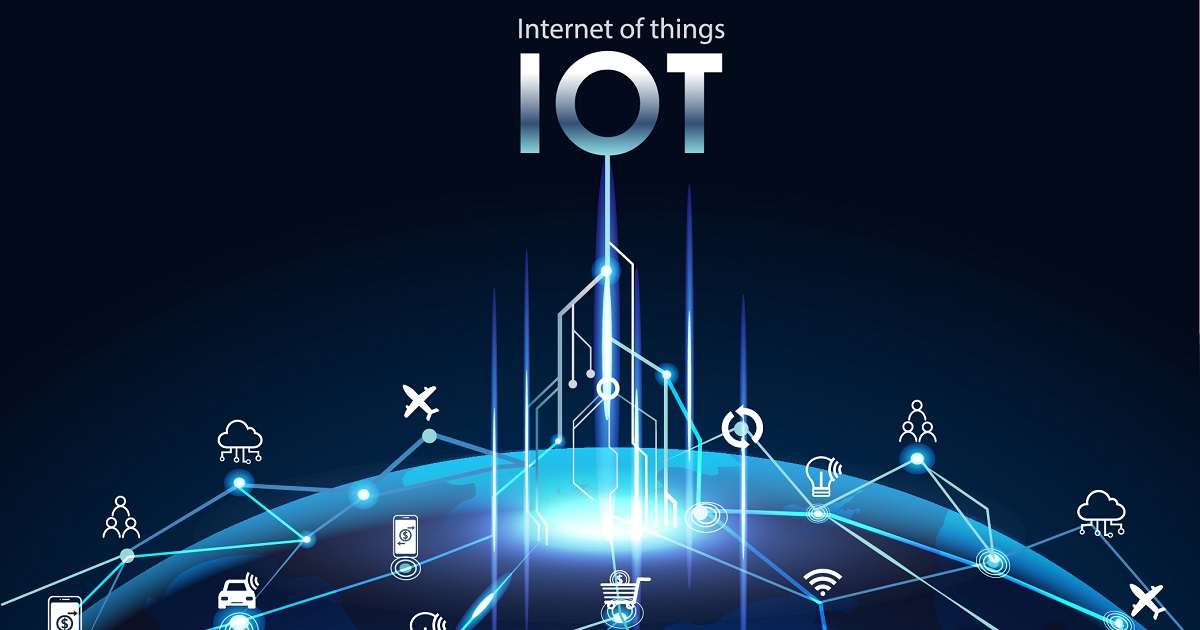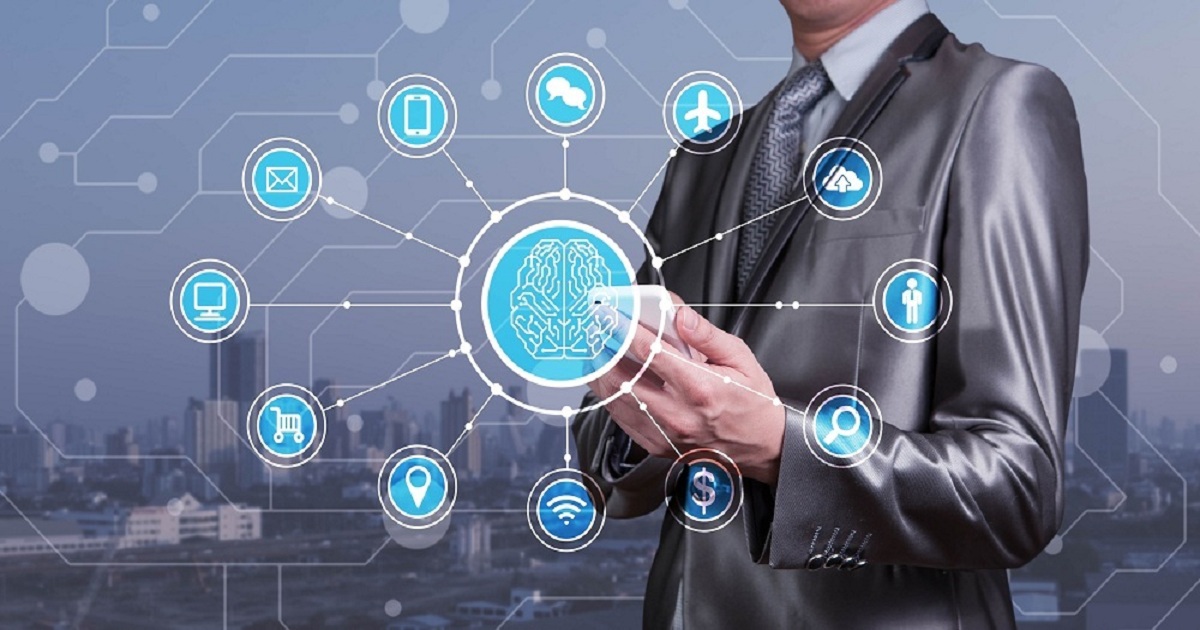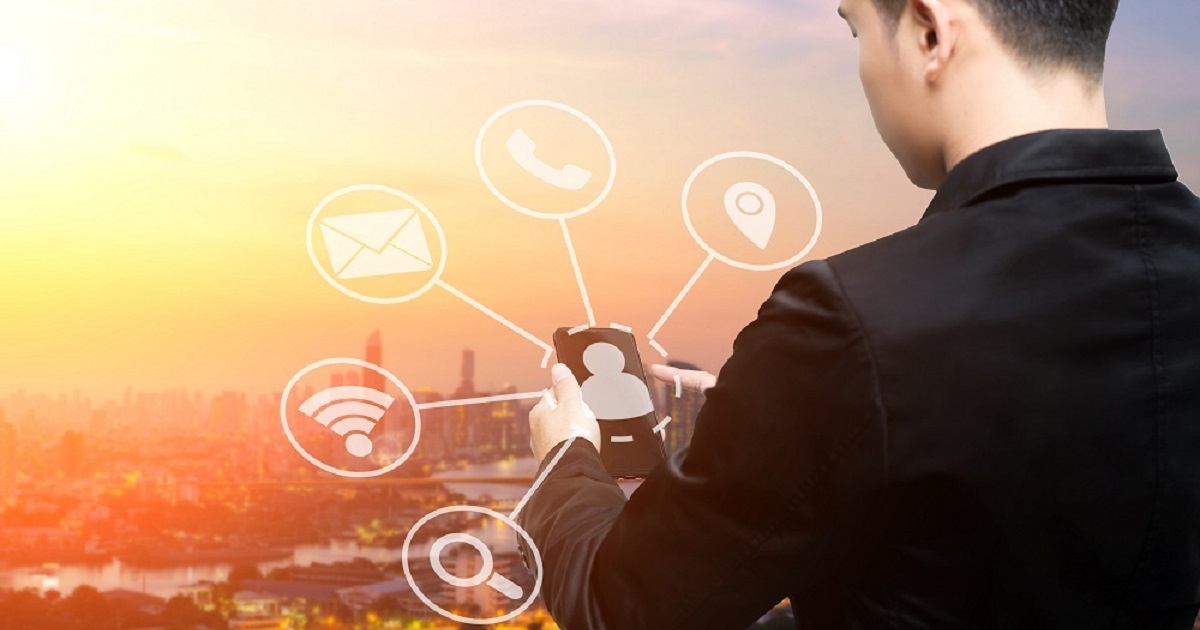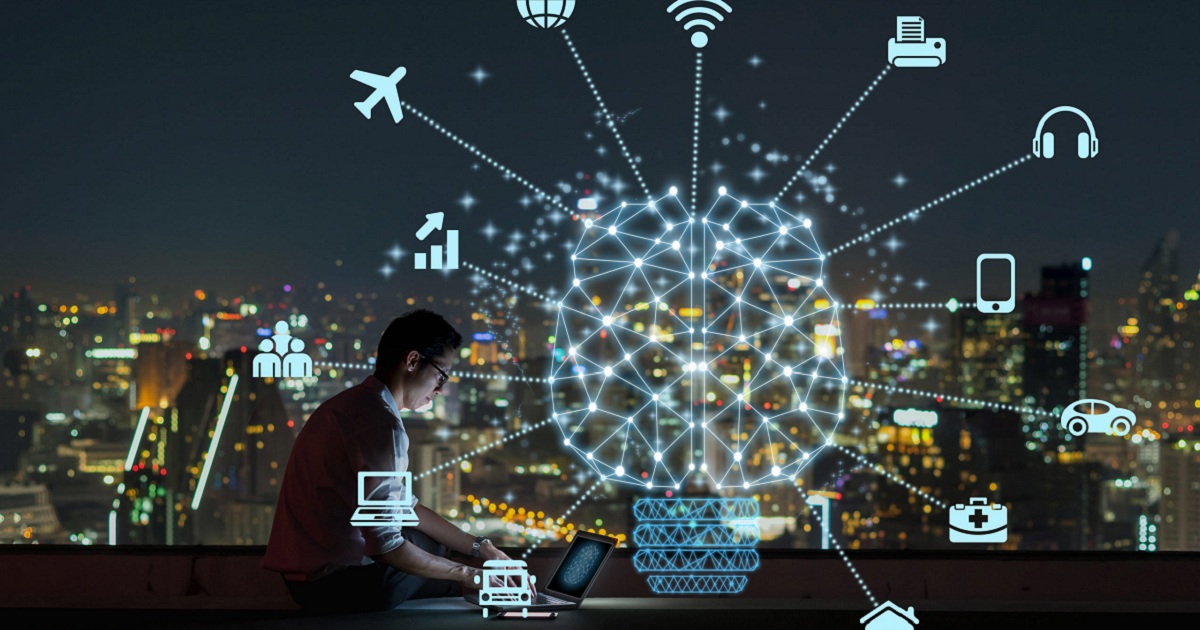
IoT Security
Article | June 28, 2023
Discover the crucial role of big data capabilities in unlocking the potential of IoT for businesses. This article covers their synergy, challenges, and value in decision-making and revenue generation.
Contents
1 Why Big Data and IoT Matter for Businesses
2 Understanding Synergy of Big Data and IoT
2.1 How IoT generates Big Data
2.2 Challenges of Processing Big Data from IoT Devices
2.3 Importance of Big Data in IoT Applications
3 The Value of Big Data and IoT for Businesses
3.1 Improved Decision-making for Businesses
3.2 Generate New Revenue Streams
4 Final Thoughts
1. Why Big Data and IoT Matter for Businesses
The internet of things (IoT) is connecting all types of physical assets to the internet, from smart wearables that track wearer’s vitals to connected industrial units that can report any malfunctions automatically. Big data in IoT is a natural outcome with the growth of IoT devices, with an immense surge in the amount of data being generated.
There are currently over 13 billion connected IoT devices worldwide.
(Source – Techjury)
This data is extremely valuable to businesses as it can help streamline operations, predict trends, and diagnose device issues. Certain functions of IoT devices that are crucial for modern businesses, such as enabling predictive maintenance, depend on the analysis of the data generated every second. However, to maximize the ROI from their IoT ecosystem, businesses must first manage and process the vast amounts of unstructured data they produce. This is where big data capabilities come in.
2. Understanding Synergy of Big Data and IoT
Big data and the IoT are fundamentally different concepts, but are closely connected. Big data is a term that is used for a great amount of data that is characterized by volume, velocity, variety and veracity (or the ‘trustworthiness’ of data). The IoT is a term for physical devices or objects linked to the internet using an assortment of technologies. Understanding the synergy between these two technologies will be critical for businesses looking to leverage their full potential.
2.1 How IoT generates Big Data
IoT is one of the primary drivers of big data growth. The vast number of interconnected devices in the IoT ecosystem generates a massive amount of data every second. This data includes information on user behavior, device performance, and environmental conditions, among others.
The nature of this data makes it challenging to store, process, and analyze using traditional data management tools. This is where big data technologies such as Hadoop, Spark, and NoSQL databases come in, providing the ability to manage massive amounts of data in near-real-time, enabling critical applications of big data in IoT. For businesses, processing IoT data is synonymous with processing big data, due to the nature of the data generated by an IoT ecosystem.
2.2 Challenges of Processing Big Data from IoT Devices
IoT data processing is a complex and challenging task due to several reasons. Firstly, the sheer volume of data generated by these devices is enormous and is only increasing. This requires a robust infrastructure and specialized tools to store, manage, and analyze the data efficiently.
This data is also generally unstructured, heterogeneous, and complex, making it difficult to process using traditional data management and analysis techniques. Moreover, it is often noisy and may contain errors or outliers, which can impact the accuracy of data analysis. Businesses also face a challenge when securing such vast amounts of data. Since IoT devices collect sensitive information such as personal and financial data at scale, it is critical to ensure that data is encrypted, transmitted securely, and stored safely.
Additionally, IoT devices often operate in remote locations with limited connectivity, making it challenging to transmit data to the cloud for storage and analysis. As IoT devices continue to proliferate and generate increasingly large amounts of data, businesses must adopt big data technologies to gain actionable insights from this data.
2.3 Importance of Big Data in IoT Applications
There are several use cases of the IoT where processing large amounts of data is essential. It plays a critical role in IoT applications, providing businesses with valuable insights that can be used to optimize processes, reduce costs, and improve overall efficiency. By collecting and analyzing large amounts of data from IoT devices, businesses can gain a better understanding of customer behavior, machine performance, and other critical metrics.
For example, big data in IoT can be used to identify patterns in customer behavior, allowing businesses to tailor their marketing efforts and improve customer engagement. Additionally, IoT devices can be used to collect data on machine performance, allowing businesses to identify potential problems before they occur, minimize downtime, and optimize maintenance schedules. The value of big data in IoT applications lies in its ability to provide businesses with real-time insights that can be used to drive growth, reduce costs, and improve overall efficiency.
3. The Value of Big Data and IoT for Businesses
Businesses looking to integrate big data in IoT must first consider their data storage and analytics capabilities. By understanding the value of big data technology in capturing and analyzing IoT-generated data, businesses can unlock insights that can help them make better decisions, optimize processes, and create new business opportunities.
3.1 Improved Decision-making for Businesses
IoT and big data technologies offer businesses a wealth of data that can be used to make better-informed decisions. By integrating IoT sensors and devices with their operations, businesses can collect real-time data on customer behavior, operational performance, and market trends. This data can then be analyzed using big data analytics tools to generate valuable insights that can inform decision-making.
For example, operational data can be analyzed to identify inefficiencies and areas for optimization, helping businesses reduce costs and improve efficiency. With the right data storage and analytics capabilities, businesses can leverage the power of IoT and big data to gain a competitive advantage and make better-informed decisions that drive growth and success.
3.2 Generate New Revenue Streams
By leveraging the vast amount of data generated by IoT devices and analyzing it with big data analytics tools, businesses can gain insights into customer behavior, market trends, and operational performance. These insights can be used to create new revenue streams and business models, such as subscription-based services, pay-per-use models, and predictive maintenance services.
For example, IoT sensors can be used to collect data on equipment performance, allowing businesses to offer predictive maintenance services that help prevent equipment breakdowns and reduce downtime. Similarly, customer data can be analyzed to identify new revenue opportunities, such as personalized product recommendations and targeted advertising. With the right strategy and investment in IoT and big data technologies, businesses can unlock new revenue streams and create innovative business models that drive growth and success.
4. Final Thoughts
Big data in IoT is becoming increasingly important for businesses, and the future prospects are bright. As IoT continues to grow and generate more data, businesses that can effectively analyze it will gain a competitive advantage, leading to increased efficiency, reduced costs, and higher ROI. To fully realize the benefits of IoT, businesses must develop big data analytics and IoT devices in tandem, creating a feedback loop that drives continuous improvement and growth. By embracing these technologies, businesses can make data-driven decisions and unlock new insights that will help them thrive in the years ahead.
Read More

IoT Security
Article | October 11, 2023
Every major industry, including retail, transportation, banking, healthcare, and energy, has significantly benefited from the Internet of Things. Processes like supply chains are where the Internet of Things best demonstrates its promise. Applications for management, forecasting, and oversight aid fleet managers in increasing distribution's operational effectiveness and decision-making openness.
Some of the primary goals for IoT deployment in supply chain management include tracking and monitoring. For example, warehouse and fleet managers can use technology to keep an eye on their stock and freight.
Reasons to Use IoT in Supply Chain Management
Real-time Location-tracking
Thanks to the Internet of Things, managers have access to a consistent stream of real-time data on the product's location and the environment surrounding transportation. You may keep track of the delivery of both finished items and raw materials, and you will be informed if the product is transported in the wrong direction.
Monitoring of Storage Conditions
Environmental sensors allow management to monitor cargo conditions and take immediate action when something changes. One of the most popular IoT supply chain systems, for example, collects data on pressure, humidity, the temperature inside vehicles, and other factors that could harm the goods and then automatically adjusts the environment.
Enhance Your Emergency Planning
Supply chain managers can design routes with the use of IoT and data analytics, taking into account traffic, weather, potential accidents, and other delay-causing events that may occur along the way. The Internet of Things collects all the data required to create adaptable backup plans and identify the source of any current delays. Also, supply chain managers can get alerts from the system in real time, which speeds up reducing risks.
Forecast Goods Arrival and Movement
IoT devices and data analytics systems are used by managers to enhance the decision-making process and boost the accuracy of delivery estimates. Real-time tracking lets businesses keep track of products as they are shipped, predict when they will arrive, and plan for and reduce the risk of delays.
Conclusion
There are many different IoT applications for supply chain management. For example, it improves communication between parties, makes it easier to track and monitor commodities, and makes planning more precise.
As long as you have a clear goal for what you need the technology to achieve for you, an IoT-based platform is an excellent investment for both small and large organizations. It's also essential to bring on a talented team for the design and development phase.
Read More

IoT Security
Article | July 5, 2023
The nature of digital and physical security is evolving as a result of cloud-based IoT software, which enables both security components to be combined and used to exploit data better.
Commercial use of cloud-based IoT software is possible, and cloud-based solutions have some advantages in the area of security. IoT technology, which is essential to this development, is driving worldwide development in many areas and revolutionizing daily operations for many businesses.
Data is essential to success in almost every sector, and security is no exception. To better understand what's going on in your business, you can combine cloud-based solutions that contain all the information on a single interface. For instance, integrating security camera feeds with cloud-based access control systems enables real-time visual identification verification.
The Impact of Combining Physical and Cyber Security
Combining digital and physical security, often known as security convergence, helps optimize IoT and cloud-based security systems. A cloud-based physical security system needs cybersecurity software to guard against internet flaws and intrusions. Similarly, physical security measures prevent sensitive data from getting into the wrong hands. Teams for physical and cyber security might combine to provide a more comprehensive action plan. The more seamlessly all physical and digital security components are linked, the more secure and future-proof a commercial system will be.
When organizations use IoT technology, cybersecurity is a significant concern. However, by combining physical and digital security, organizations can make sure their cloud-based systems are well protected from vulnerabilities. In addition, the security and IT teams will also be better able to manage the evolving security landscape when the organization combines physical and digital security ideas.
Read More

Article | January 29, 2021
We live in the age of technological advancement and progress is happening at an unprecedented speed. With newer technologies emerging every day, it is unreasonable to not be intrigued by their implications on business. Artificial Intelligence and the Internet of Things are two independent technologies that are changing the face of several industries, one advancement at a time. While Artificial Intelligence promises to automate and simplify everyday tasks for humans, the Internet of Things is rapidly bridging the gap between physical and digital. The convergence of these two technologies promises to simplify lives through connected devices.
This convergence has already been witnessed in several industries and is being hailed as the Artificial Intelligence of Things or AIoT. Experts across industries claim that Artificial Intelligence of Things is set to redefine the future of the industry and mold intelligent and connected systems.
Applications
The Artificial Intelligence of Things is a congruence of AI and IoT infrastructures being used to achieve several applications across industries more accurately and efficiently. We already know that IoT generates scores of data, but this data is pretty useless in its raw form, it the organization, analysis, and interpretation of the data that makes it invaluable. Manually parsing through all of that data can take months given the sheer volume of it. This is where AI comes in. Modern AIs are programmed to efficiently handle large amounts of data to turn them into coherent pieces of information. Together, IoT and AI make for a great technological tool for business. Take a look at some other applications of AIoT in business.
Marketing
Good marketing comes from a series of well informed and well-researched decisions. For example, deciding on where the budget is allotted, what market strategy is put into action, or which campaign is prioritized. While human decisions can be fallible, most businesses today cannot afford to make big mistakes. This is where AIoT turns into a big help. Through the Artificial Internet of Things, marketers can get reports about market trends, probabilities, customer behavior, and more, most of these in real-time. These reports help marketers make informed decisions that are much likely to result in success.
Drones
Drones are one of the biggest advancements of IoT technology. In fact, drones are so popular with such varied applications, that drones can be talked of as a separate technology in themselves. These flying machines were originally invented for military purposes such as surveillance or weapon deployment but markets have rapidly found utility in drones for many other purposes. Today, they are being used as delivery bots, nature conservation, surveillance mechanisms, research tools, safety equipment, field substitutes, agriculture, geo-mapping, and a lot more.
With AIoT, drones have become smarter, more adaptable, and way more useful. As Artificial intelligence allows drones to make minor decisions, their applications have gotten wider and more sophisticated. In a brilliant use case of AIoT, a drone enthusiast named Peter Kohler has started the Plastic Tide Project which uses drones to locate plastic on the ocean surfaces. The drones are powered by AI which allows them to locate plastic and not other elements like marine life or corals. These drones then hover over the plastic waste and speed up the ocean cleaning process.
Drones can be used to map farmlands, determine the optimum farming processes and schedules, count the cattle, monitor their health, and even undergo certain physical tasks in agriculture, all thanks to the Artificial Intelligence of Things.
AR/VR
Augmented Reality and Virtual Reality are both heavily data-dependent technologies. There cannot be a convincing virtual reality unless there is data available for creating the said simulation. AR and VR have both found applications in several industries like healthcare, gaming, training, education, design, and manufacturing. Most of these applications fall in the critically important category and therefore, the AR or VR must be accurate to the minutest detail. This can only be achieved with mounds of data from the actual reality. With the help of IoT, this data is not accessible, and AI interprets it in a way that it can be turned into several different formats.
Infrastructure
One of the most useful applications of AIoT has been infrastructure. Artificial Intelligence of Things has fuelled innovation and planning for smart cities across the world. With the open data available for urban planning, cities are now becoming safer and more convenient to live in. AIoT has also made it possible to optimize energy consumption and ensure safer roadways through traffic surveillance. With smart energy grids, smart streetlights, and smart public transport, energy consumption and carbon emissions are both controlled.
Moreover, AIoT has given a whole new life to urban design, and now comfort and aesthetics do not have to be sacrificed for convenience.
Energy
As we discussed above, Artificial Intelligence of Things is instrumental in optimizing energy consumption in urban areas. However, the applications of AIoT in the energy sector are not limited to smart cities. Many utilities providers across the globe are already gearing up to incorporate AIoT in their process. The expected benefits from the Artificial Intelligence of Things range from improved grid management, power quality, reliability, and restoration resilience to enhanced cybersecurity and better integration of distributed energy.
Most utilities providers have still not adopted the new technology but with the increasing complexity of grid management and higher customer experience demands, there is no denying that they will have to deploy AIoT solutions to tackle these.
Robotics
In layman’s experience robots are either extremely sophisticated machines from sci-fi that undertake every task humans can and more, or they are these clunky things that can pass you the butter. In practice, however, robotics is a lot more practical than these ideas. Today, robotics is at the forefront of AIoT applications.
The Artificial Intelligence of Things is being used in robotics for several applications such as surgical procedures, manufacturing, and even first aid. In healthcare specifically, AIoT powered robots are taking huge leaps. Robotic surgery eliminates the chance of human error and offers a much more precise surgical experience with minimum invasion. This enhances the success rate of surgery and aids faster recovery in patients.
Logistics
The convergence of AI and IoT has made a huge impact on logistics as it is now possible to automate the entire process, track the goods, as well as monitor the entire trajectory from deployment to delivery. With the addition of drones and robotics, even the last mile delivery can be automated with zero human intervention. This makes for faster delivery, better customer experience, as well as a well-designed supply chain management system.
Industrial
As the concept of adding smart sensors to physical objects emerged in the 1980s, a new term was coined a decade later—Industrial Internet of Things. IIoT is now a huge phenomenon of automating and optimizing industrial operation technologies across the globe. As IIoT is deployed in several factions of the industry including manufacturing, supply chain management, human resources, and energy management, these devices and sensors generate a massive amount of data daily. The data generated from even a single process can be dizzying, and this is where AI makes a difference. AI can not only manage this data but also find the relevant points of data and analyze it for business purposes.
Edge Computing
Artificial Intelligence has given way for another technology i.e. Edge computing. Edge computing allows a device to process data itself rather than rely on remote data servers to do so. It may seem like a small feat but think of the possibilities it offers—drones don’t have to be connected to find their way, smart appliances can interact with each other without a shared network, and thermostats can change the temperature based on your past preferences automatically.
Edge computing is by no way a new technology but, in the future, it offers huge possibilities like smart automobiles and aircraft, or even robots in every home.
Frequently Asked Questions
What are the examples of Artificial Intelligence?
Some of the most common examples of Artificial Intelligence are Google Maps and Uber. The AI allows you to find routes to any destination and even hail rides there.
How does AI help IoT?
Artificial Intelligence can comb through millions of data points in seconds to come up with patterns and analyze them. As IoT generates a lot of data continuously, AI is a powerful and complementary technology that helps IoT.
Is IoT related to Artificial Intelligence?
Internet of Things and Artificial Intelligence are two separate technologies that interact with each other well as their functions aid each other progress. AI helps with the data generated by IoT, and IoT provides relevant data for AI to analyze.
{
"@context": "https://schema.org",
"@type": "FAQPage",
"mainEntity": [{
"@type": "Question",
"name": "What are the examples of Artificial Intelligence?",
"acceptedAnswer": {
"@type": "Answer",
"text": "Some of the most common examples of Artificial Intelligence are GoogleMaps and Uber. The AI allows you to find routes to any destination and even hail rides there."
}
},{
"@type": "Question",
"name": "How does AI help IoT?",
"acceptedAnswer": {
"@type": "Answer",
"text": "Artificial Intelligence can comb through millions of data points in seconds to come up with patterns and analyze them. As IoT generates a lot of data continuously, AI is a powerful and complementary technology that helps IoT."
}
},{
"@type": "Question",
"name": "Is IoT related to Artificial Intelligence?",
"acceptedAnswer": {
"@type": "Answer",
"text": "Internet of Things and Artificial Intelligence are two separate technologies that interact with each other well as their functions aid each other progress.AI helps with the data generated by IoT, and IoT provides relevant data for AI to analyze."
}
}]
}
Read More